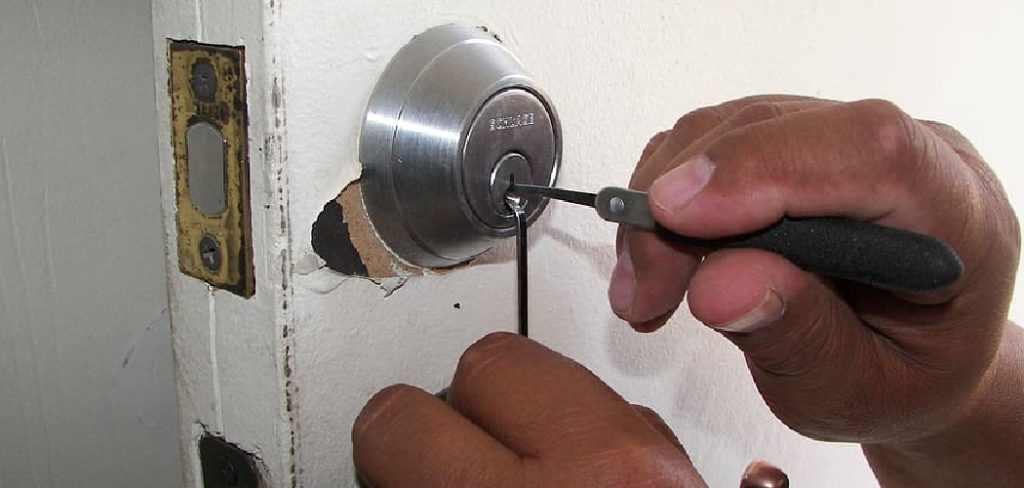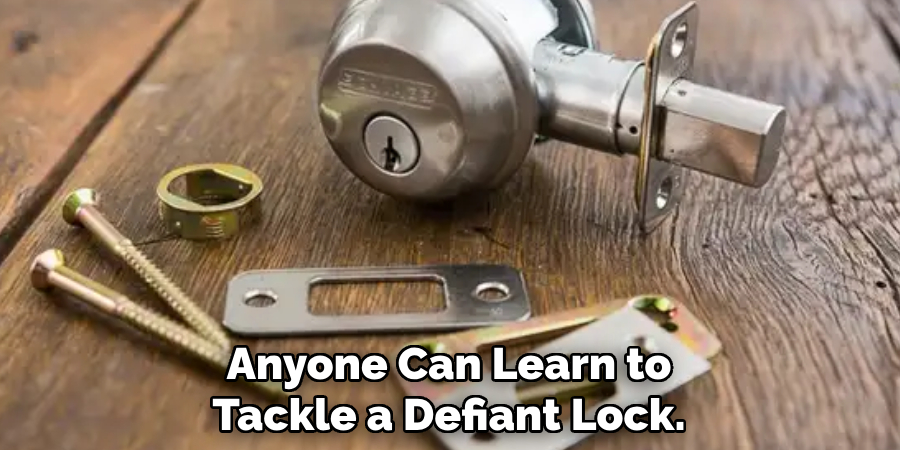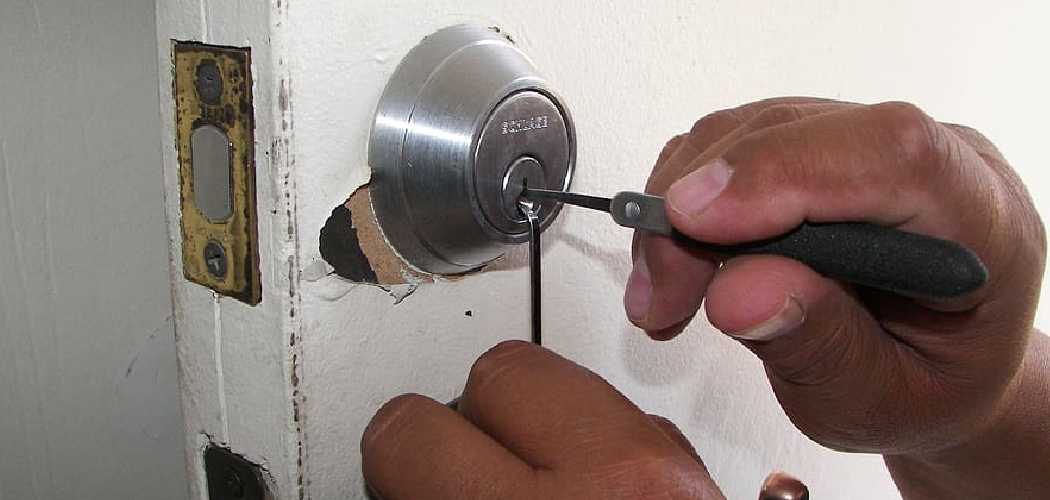Picking a lock, especially one known for its defiance, requires patience, precision, and a thorough understanding of lock mechanisms. This guide is designed to provide you with the foundational knowledge and techniques necessary to approach such a challenging task.

Whether you are a hobbyist exploring lock picking as a skill or someone facing a locked door in an unexpected situation, this document will walk you through how to pick a defiant lock effectively and responsibly. Always remember to practice lock picking ethically and only on locks you own or have explicit permission to manipulate.
What Is a Defiant Lock?
A Defiant lock is a widely recognized brand of residential door locks that offers reliable and affordable security solutions for homeowners. Known for their simplicity and durability, Defiant locks are commonly used on entry doors, interior doors, and other secure areas of a property. They are designed with standard pin tumbler mechanisms, which make them compatible with most traditional keys and tools.
Their straightforward design also makes them an ideal choice for individuals interested in studying lock mechanisms, as the internal components are easy to understand and manipulate. While Defiant locks provide an essential level of security for everyday use, understanding their construction can be a valuable skill for both hobbyists and professionals when approached responsibly.
Why Learn to Pick a Lock
Learning to pick a lock can be an invaluable skill when approached with ethics and responsibility. It offers insight into the mechanics of lock security, allowing individuals to identify vulnerabilities in systems and improve them. For hobbyists, it serves as a mentally stimulating activity, akin to solving a complex puzzle. Professionals, such as locksmiths or security experts, benefit from understanding lock-picking to aid in emergency access situations or to design more secure locking systems.
However, it is important to stress that this skill must be practiced within the boundaries of the law and with proper permissions, ensuring it is used solely for constructive and ethical purposes.
Tools Needed to Pick a Defiant Lock
To pick a Defiant lock, you will need a few essential tools often found in a standard lock-picking set. These include:
- Tension Wrench – This tool applies rotational pressure to the lock’s plug, creating the necessary tension to manipulate the pins.
- Hook Pick – A versatile pick used to individually manipulate each pin within the lock.
- Rake Pick – A tool used to quickly move multiple pins simultaneously, useful for simpler locks or as a starting approach.
- Practice Lock (Optional) – If you’re new to lock-picking, using a practice lock can help you understand mechanics without risking damage to a real lock.
- Lubricant (Optional) – A small amount of lubricant can help the pins move more smoothly, especially if the lock is older or stiff.
Using these tools with precision and patience is key to successfully picking a Defiant lock while respecting all relevant laws and permissions.
10 Methods on How to Pick a Defiant Lock
Lock picking is often seen as a mysterious skill reserved for spies or locksmiths, but with the right methods and tools, anyone can learn to tackle a defiant lock. Whether you’re locked out of your home or exploring lock-picking as a hobby, knowing how to approach the challenge safely and legally is essential. Below, we outline 10 practical and effective methods to pick a defiant lock.

Disclaimer: Always ensure you have legal permission to pick a lock before proceeding. Unauthorized lock-picking is illegal and punishable by law.
1. Understand the Mechanics of the Lock
Before attempting to pick a lock, you need to understand how it works. Most defiant locks use a pin tumbler mechanism, where spring-loaded pins align to allow the lock to turn. Researching the internal mechanism and watching tutorials can give you a strong foundation.
Why it works: Knowing the lock’s design helps you choose the right tools and strategies, making you less likely to damage the lock.
2. Use a Professional Lock-Picking Set
Invest in a reliable lock-picking set. These typically include tools like tension wrenches and various picks. For defiant locks, a rake pick can be especially useful as it works well on standard pin tumbler locks.
Tip: Practice using these tools on practice locks or old locks you no longer use to build your skills before tackling something important.
3. Apply the Raking Method
The raking method is one of the easiest techniques for beginners. Insert the rake pick into the lock and jiggle it while applying light pressure with a tension wrench. This approach can quickly manipulate the pins into place.
Pro Advice: Be gentle. Excessive force can hinder the pins from aligning correctly.
4. Try Single Pin Picking (SPP)
Single pin picking is a more advanced method where you set each pin individually. Use a thin hook pick to manipulate each pin inside the barrel while applying consistent pressure with the tension wrench.
Why it’s effective: SPP allows for greater control and precision, which is particularly useful for stubborn locks with security pins.
5. Keep a Bobby Pin or Hairpin Handy
If you don’t have a professional lock-picking set, a bobby pin or hairpin can serve as a makeshift pick and tension tool. Straighten the pin and bend one end slightly to create a pick-like shape. Use another pin as the tension wrench.
Quick Tip: Flex the hairpin gently to avoid snapping it in the lock.
6. Use a Credit Card on Spring Locks
For spring-loaded locks, like those found on interior doors, a sturdy plastic card can work wonders. Slide the card between the door and the frame, angling it against the latch. Wiggle and push until the latch retracts, allowing the door to open.

Example: This technique works best on locks with minimal security features, such as cheap bedroom or bathroom locks.
7. Rely on the Bump Key Technique
A bump key is a specially cut key designed to pick pin tumbler locks. Insert the key into the lock and tap it with a blunt object while turning it gently. The force pushes the pins upward, unlocking the mechanism.
Safety Warning: Use bump keys cautiously and only in legal situations, as this method can damage your lock.
8. Turn to Lock Picking Guns
A lock-picking gun produces rapid upward motions to manipulate the pins inside the lock. This tool is suitable for defeating tougher locks efficiently, although it requires some practice to master.
Why use it: It’s a time-saving method for those struggling with traditional techniques.
9. Use Lubricant to Ease Stubborn Locks
Sometimes the issue isn’t your technique but friction inside the lock. Apply a small amount of graphite-based lubricant or WD-40 to the lock mechanism. This can help loosen up stubborn or rusted locks, making them easier to pick.
Pro Tip: Avoid over-lubrication to prevent buildup or mess.
10. Know When to Call a Professional
If you’ve tried several techniques without success, it’s time to call a licensed locksmith. Professionals have the tools, skills, and experience to open locks without damaging them.
Why it matters: Attempting more complex methods without the right expertise can lead to permanent lock damage or costly repairs.
Unlock Your Potential with Practice
Mastering the art of lock picking requires patience, skill, and practice. By trying these techniques, you can confidently approach defiant locks and grow your knowledge of lock mechanisms. Remember to always use your skills responsibly and legally.
Want to enhance your toolkit or refine your lock-picking skills? Explore our range of premium lock-picking sets and instructional materials today.
Maintenance and Upkeep
Proper maintenance of your lock-picking tools is essential to ensure their durability and effectiveness. Regularly clean your tools to remove dirt, debris, or residue that may accumulate over time. Use a soft cloth and a mild cleaning solution to gently wipe them down, ensuring no corrosive substances remain on the metal.

Additionally, inspect your tools for signs of wear or damage, such as bent picks or dulled edges, and replace them if necessary. Storing your tools in a protective case helps prevent unnecessary damage and makes them easily accessible when needed. With regular upkeep, your lock-picking tools will remain reliable for years to come.
When to Contact a Professional
While having a set of lock-picking tools and basic knowledge can be incredibly useful, there are situations when it’s best to seek the help of a professional locksmith. If you encounter a high-security lock that you are unfamiliar with or that uses complex mechanisms, attempting to pick it without proper expertise may lead to damage.
Additionally, if you are dealing with a lockout situation involving important or sensitive property, contacting a professional can save time and ensure the lock remains intact. Locksmiths are trained to handle advanced locking systems and can provide solutions tailored to your needs, offering peace of mind and preserving the integrity of your locks.
Legal Considerations and Safety Concerns
When dealing with locks, it is essential to be aware of the legal implications and safety considerations associated with lock-picking or bypassing mechanisms. In many jurisdictions, attempting to pick a lock on property you do not own or have explicit permission to access can be considered unlawful and may carry severe penalties. Always ensure that you have the proper authorization before attempting to manipulate or open any lock.
From a safety perspective, improper techniques or the use of incorrect tools can result in significant damage to the lock, leaving it nonfunctional and potentially compromising the security of the property. Additionally, experimenting with advanced lock systems without adequate knowledge can lead to accidents or injuries, especially when dealing with electronic or complex mechanical locks. To avoid legal troubles and ensure safety, it is strongly recommended to seek professional assistance whenever in doubt.

Conclusion
In conclusion, while the allure of solving lock-related issues independently may seem appealing, the potential risks and consequences often outweigh the benefits. Prioritizing safety, security, and legal compliance is essential when handling locks, particularly advanced systems.
By seeking the expertise of trained professionals, individuals can ensure that issues are resolved efficiently and correctly, safeguarding both the property and its occupants. Thanks for reading our blog post on how to pick a defiant lock! We hope you found it helpful and informative.

